Product Description
OEM Bearing SL014860 Full Complement Cylindrical Roller Bearing
|
Product Name |
OEM Bearing SL014860 Full Complement Cylindrical Roller Bearing |
|
Brand |
TFN / OEM |
|
Model Number |
SL014860 |
|
Ring Material |
Steel |
|
Cage Material |
Brass,Nylon,Steel |
|
Precision |
P0, P6, P5, or as requested |
|
Vibration |
ZV1, ZV2, ZV3, or as requested |
|
Clearance |
C0,C2,C3, or as requested |
|
Type |
SL series ,N series,NU series,NJ series,Nup series,NF series |
|
Features |
High load carrying capacity ,High stiffness,Accommodate axial displacement ,Low friction ,Long service life,Enhanced operational reliability ,Separable and interchangeable . |
|
Quality standard |
ISO9001:2000/ SGS |
|
Quality Control Process |
1.Assembly |
|
2.Windage test |
|
|
3.Cleaning |
|
|
4.Rotary test |
|
|
5.Greasing and gland |
|
|
6.Noise inspection |
|
|
7.Appearance inspection |
|
|
8.Rust prevention |
|
|
9.Product packaging |
|
|
Application |
cylindrical roller bearing is usually only subject to radial force. Compared with ball bearing of the same size, its radial bearing capacity is increased by 1.5-3 times. It is rigid and shock resistant. It is mainly used for large motor, machine tool spindle, engine front and rear support shaft, train bus axle, diesel engine crankshaft, automobile tractor gearbox, etc. |
Other cylindrical roller bearing models :
| Designation | Principal dimensions | Basic load ratings | Fatigue load limit | Speed ratings | ||||
| dynamic | static | Reference speed | Limiting speed | |||||
| d | D | B | C | C0 | Pu | |||
| mm | kN | kN | r/min | |||||
| NU 202 ECP | 15 | 35 | 11 | 12.5 | 10.2 | 1.22 | 22000 | 26000 |
| NU 202 ECPHA | 15 | 35 | 11 | 12.5 | 10.2 | 1.22 | 22000 | 34000 |
| NJ 202 ECP | 15 | 35 | 11 | 12.5 | 10.2 | 1.22 | 22000 | 26000 |
| NU 203 ECML | 17 | 40 | 12 | 20 | 14.3 | 1.73 | 20000 | 34000 |
| NJ 203 ECP | 17 | 40 | 12 | 20 | 14.3 | 1.73 | 20000 | 22000 |
| N 303 ECP | 17 | 47 | 14 | 28.5 | 20.4 | 2.55 | 17000 | 20000 |
| NJ 203 ECPHA | 17 | 40 | 12 | 20 | 14.3 | 1.73 | 20000 | 30000 |
| NU 303 ECP | 17 | 47 | 14 | 28.5 | 20.4 | 2.55 | 17000 | 20000 |
| NUP 2203 ECP | 17 | 40 | 16 | 27.5 | 21.6 | 2.65 | 20000 | 22000 |
| NU 203 ECP | 17 | 40 | 12 | 20 | 14.3 | 1.73 | 20000 | 22000 |
| NJ 2203 ECP | 17 | 40 | 16 | 27.5 | 21.6 | 2.65 | 20000 | 22000 |
| NUP 203 ECP | 17 | 40 | 12 | 20 | 14.3 | 1.73 | 20000 | 22000 |
| NJ 203 ECML | 17 | 40 | 12 | 20 | 14.3 | 1.73 | 20000 | 34000 |
| N 203 ECP | 17 | 40 | 12 | 20 | 14.3 | 1.73 | 20000 | 22000 |
| NU 2203 ECP | 17 | 40 | 16 | 27.5 | 21.6 | 2.65 | 20000 | 22000 |
| N 203 ECPH | 17 | 40 | 12 | 20 | 14.3 | 1.73 | 20000 | 22000 |
| NJ 303 ECP | 17 | 47 | 14 | 28.5 | 20.4 | 2.55 | 17000 | 20000 |
| NU 203 ECPHA | 17 | 40 | 12 | 20 | 14.3 | 1.73 | 20000 | 30000 |
| NU 2304 ECP | 20 | 52 | 21 | 47.5 | 38 | 4.8 | 15000 | 18000 |
| N 304 ECP | 20 | 52 | 15 | 35.5 | 26 | 3.25 | 15000 | 18000 |
| NU 2204 ECP | 20 | 47 | 18 | 34.5 | 27.5 | 3.45 | 17000 | 19000 |
| NUP 304 ECP | 20 | 52 | 15 | 35.5 | 26 | 3.25 | 15000 | 18000 |
| NUP 204 ECPHA | 20 | 47 | 14 | 28.5 | 22 | 2.75 | 17000 | 24000 |
| NJ 2304 ECP | 20 | 52 | 21 | 47.5 | 38 | 4.8 | 15000 | 18000 |
| NU 204 ECML | 20 | 47 | 14 | 28.5 | 22 | 2.75 | 17000 | 30000 |
| NUP 2304 ECP | 20 | 52 | 21 | 47.5 | 38 | 4.8 | 15000 | 18000 |
| NU 204 ECP | 20 | 47 | 14 | 28.5 | 22 | 2.75 | 17000 | 19000 |
| NJ 204 ECPHA | 20 | 47 | 14 | 28.5 | 22 | 2.75 | 17000 | 24000 |
| NU 304 ECP | 20 | 52 | 15 | 35.5 | 26 | 3.25 | 15000 | 18000 |
| NJ 2204 ECP | 20 | 47 | 18 | 34.5 | 27.5 | 3.45 | 17000 | 19000 |
| NUP 204 ECP | 20 | 47 | 14 | 28.5 | 22 | 2.75 | 17000 | 19000 |
| NUP 204 ECML | 20 | 47 | 14 | 28.5 | 22 | 2.75 | 17000 | 30000 |
| N 204 ECP | 20 | 47 | 14 | 28.5 | 22 | 2.75 | 17000 | 19000 |
| NJ 204 ECP | 20 | 47 | 14 | 28.5 | 22 | 2.75 | 17000 | 19000 |
| NJ 304 ECP | 20 | 52 | 15 | 35.5 | 26 | 3.25 | 15000 | 18000 |
| NJ 204 ECML | 20 | 47 | 14 | 28.5 | 22 | 2.75 | 17000 | 30000 |
Certificate
Packing
FAQ
Q:Why choose SEMRI?
A:1. We are professional,have factory in ZheJiang for many years.
2. We are experienced for 10 years.
3. We can offer a various kind of bearing with high quality:Z1V1,Z2V2,Z3V3 and best price
Q:How is the quality of your products?
A:The same quality, we have lower price.The same price,we have better quality.
Q:Except Full complement Cylindrical roller bearing,what other main bearing do you have?
A:Taper Roller Bearing,Thrust roller bearing,Spherical roller bearing,Deep groove ball bearing,Angular contact ball bearing etc.
Q:Can I get Full complement Cylindrical roller bearing free samples?
A:We will charge a little sample fee for our regular designs or customized ones, These charges will be refunded to you when your mass production order is confirmed.
Q:Can you make the products as our requirement?
A:We have more than 10 year’s OEM experience. We supply products fo more than 300 automobile parts factories.
/* January 22, 2571 19:08:37 */!function(){function s(e,r){var a,o={};try{e&&e.split(“,”).forEach(function(e,t){e&&(a=e.match(/(.*?):(.*)$/))&&1
| Rolling Body: | Roller Bearings |
|---|---|
| The Number of Rows: | Double |
| Outer Dimension: | Medium and Large(120-190mm) |
| Material: | Bearing Steel |
| Spherical: | 0 |
| Load Direction: | Radial Bearing |
| Samples: |
US$ 0.1/Piece
1 Piece(Min.Order) | |
|---|
| Customization: |
Available
|
|
|---|
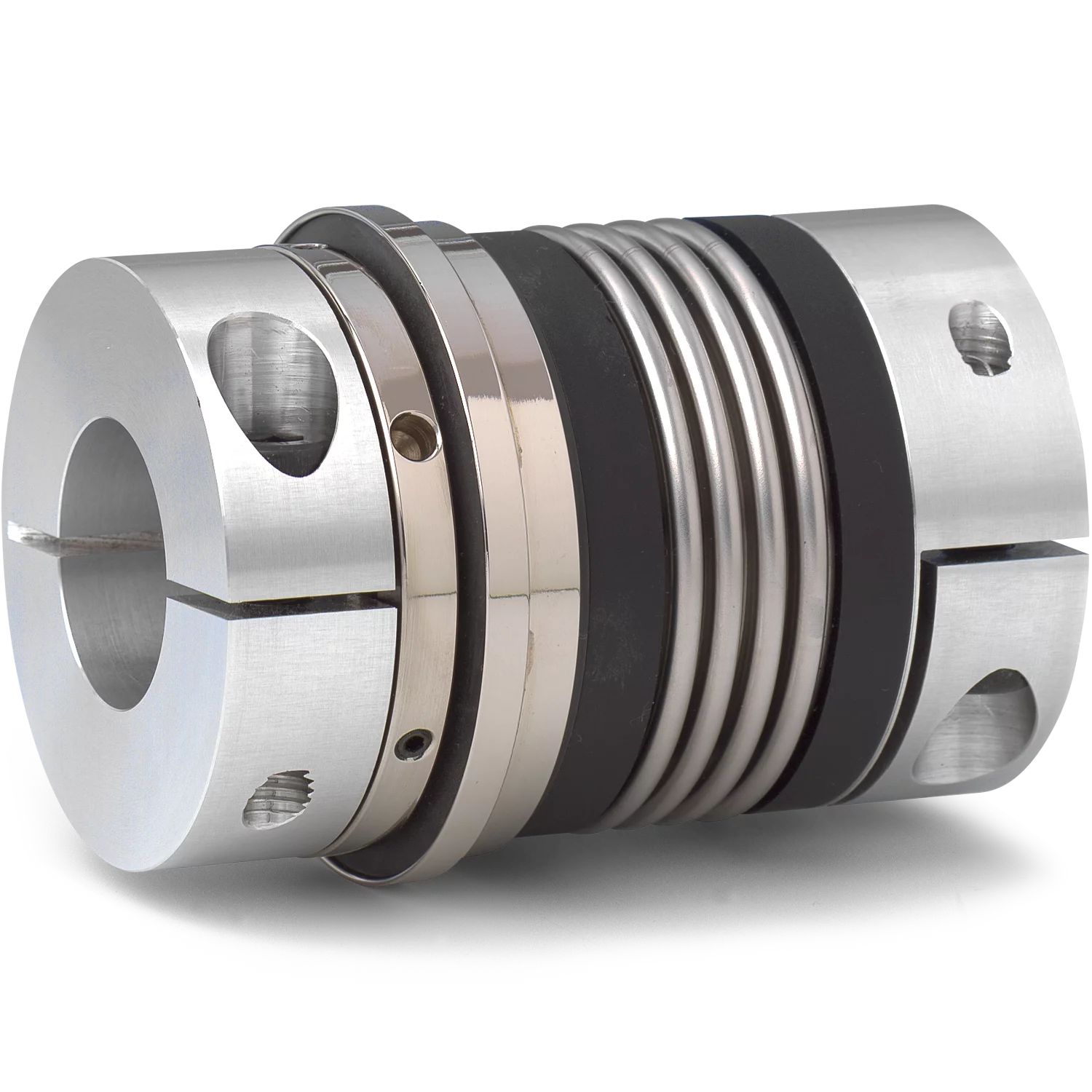
Can you provide insights into the importance of proper tensioner roller alignment?
Proper tensioner roller alignment is of utmost importance in a belt drive system as it directly affects the system’s functionality, performance, and longevity. Here are detailed insights into the importance of proper tensioner roller alignment:
1. Optimal Belt Tension:
Proper tensioner roller alignment ensures optimal belt tension, which is crucial for the efficient operation of the belt drive system. When the tensioner roller is correctly aligned, it applies the appropriate tension to the belt, keeping it properly tensioned and preventing excessive slack or tightness. Optimal belt tension ensures efficient power transfer, minimizes belt slippage, reduces wear on the belt and other components, and maximizes the overall performance of the system.
2. Prevents Belt Misalignment:
Tensioner roller alignment plays a vital role in preventing belt misalignment. Misalignment occurs when the belt deviates from its intended path, causing it to run off-center or make contact with adjacent components. Improper tensioner roller alignment can introduce lateral forces on the belt, leading to misalignment. Belt misalignment can result in reduced power transmission efficiency, increased wear on the belt and pulleys, and the generation of noise and vibrations. Proper tensioner roller alignment helps maintain the belt’s alignment, ensuring smooth operation and minimizing the risk of misalignment-related issues.
3. Reduces Belt Wear and Failure:
Proper tensioner roller alignment helps minimize belt wear and failure. Misalignment can cause the belt to rub against the pulleys or other components, resulting in accelerated wear and damage to the belt. Excessive wear can lead to belt stretching, cracking, or even premature failure. By ensuring proper tensioner roller alignment, the belt remains in its intended position, reducing friction, wear, and the risk of belt failure. This extends the lifespan of the belt and minimizes the need for frequent replacements, resulting in cost savings and improved system reliability.
4. Minimizes Noise and Vibration:
Correct tensioner roller alignment contributes to reduced noise and vibration levels in the belt drive system. Misalignment can cause the belt to oscillate, vibrate, or produce noise as it rubs against the pulleys or other components. These vibrations and noise can be transmitted throughout the system, leading to discomfort, increased wear on components, and a decrease in overall system efficiency. Proper tensioner roller alignment ensures smooth belt operation, minimizing vibrations and noise, and providing a quieter and more comfortable working environment.
5. Improves System Efficiency:
Proper tensioner roller alignment improves the overall efficiency of the belt drive system. Misalignment can result in energy losses due to increased friction, belt slippage, or inefficient power transfer. When the tensioner roller is correctly aligned, it helps maintain optimal belt contact with the pulleys, reducing energy losses and ensuring efficient power transmission. Improved system efficiency leads to reduced energy consumption, increased productivity, and cost savings over the long term.
6. Ensures Reliable Performance:
Tensioner roller alignment is critical for ensuring reliable performance of the belt drive system. Misalignment can lead to unexpected system failures, breakdowns, or unplanned downtime. Proper tensioner roller alignment helps maintain the overall stability and reliability of the system, reducing the risk of sudden failures or disruptions. By ensuring reliable performance, proper tensioner roller alignment contributes to increased productivity, improved operational efficiency, and enhanced system longevity.
7. Facilitates Maintenance and Service:
Proper tensioner roller alignment simplifies maintenance and service tasks. When the tensioner roller is correctly aligned, it is easier to access and adjust, allowing for straightforward tension adjustments or replacement when necessary. Maintenance personnel can quickly identify and address any alignment issues, ensuring that the system remains in optimal working condition. Proper tensioner roller alignment facilitates efficient maintenance practices, reduces downtime during servicing, and enhances the overall serviceability of the belt drive system.
In summary, proper tensioner roller alignment is crucial for the optimal performance, longevity, and reliability of a belt drive system. It ensures optimal belt tension, prevents misalignment, reduces wear on the belt, minimizes noise and vibration, improves system efficiency, and facilitates maintenance and service. By giving due attention to tensioner roller alignment, system operators can maximize the benefits of their belt drive systems and avoid potential issues that can arise from misalignment.
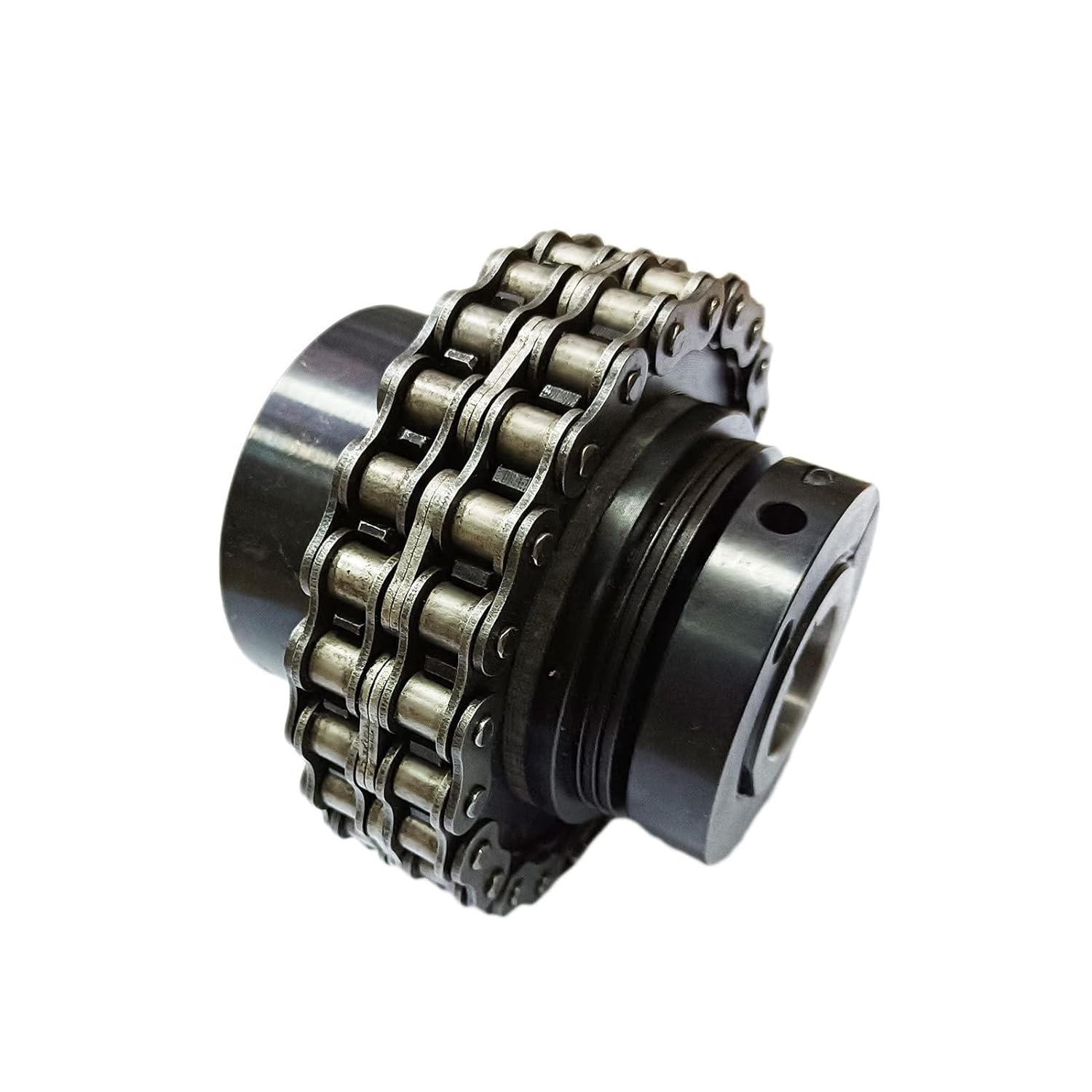
Can you provide examples of products or machinery that use tensioner rollers in their systems?
Yes, tensioner rollers are utilized in various products and machinery where belt drive systems are employed. Here are some examples of products and machinery that use tensioner rollers:
1. Automotive Engines:
In automotive engines, tensioner rollers are commonly used in the accessory belt drive systems. These systems power components such as the alternator, power steering pump, water pump, and air conditioning compressor. Tensioner rollers help maintain proper belt tension, ensuring efficient power transmission and preventing belt slippage or failure.
2. Industrial Machinery:
In industrial machinery, tensioner rollers are employed in numerous applications. They can be found in conveyor systems, where they help maintain belt tension and alignment over long distances. Tensioner rollers are also used in manufacturing equipment, printing presses, and packaging machines to ensure optimal belt operation and power transmission.
3. Agricultural Equipment:
Agricultural machinery, such as tractors, combines, and hay balers, often rely on tensioner rollers in their belt-driven systems. These tensioner rollers help maintain proper tension in belts powering various components, such as harvesting equipment, conveyor systems, and hydraulic systems.
4. Construction Machinery:
Tensioner rollers are incorporated into the belt drive systems of construction machinery, including excavators, loaders, and cranes. They ensure proper tension in belts driving components like hydraulic pumps, generators, and conveyor systems, enabling reliable power transmission in demanding construction environments.
5. HVAC Systems:
Heating, ventilation, and air conditioning (HVAC) systems utilize tensioner rollers in their belt drive systems. Tensioner rollers help maintain the correct tension in belts driving components such as fans, blowers, and compressors, ensuring efficient and reliable operation of HVAC systems in residential, commercial, and industrial settings.
6. Power Tools:
Many power tools, such as drills, saws, and sanders, utilize tensioner rollers in their belt drive mechanisms. Tensioner rollers help maintain proper belt tension, ensuring efficient power transfer and reliable operation of the tools, even under heavy loads or high-speed applications.
7. Fitness Equipment:
In fitness equipment, tensioner rollers are commonly used in treadmills, exercise bikes, and rowing machines. These tensioner rollers ensure the correct tension in belts powering the movement mechanisms, providing smooth and consistent resistance, and enabling users to perform workouts effectively.
8. Material Handling Equipment:
Tensioner rollers are crucial components in material handling equipment, including forklifts, palletizers, and conveyor systems. They help maintain proper belt tension, ensuring reliable power transmission and smooth movement of materials in warehouses, distribution centers, and manufacturing facilities.
9. Marine Applications:
In marine applications, tensioner rollers are utilized in belt drive systems for various components, such as water pumps, alternators, and cooling systems. Tensioner rollers help maintain proper belt tension in marine engines, ensuring reliable power transmission and efficient operation in challenging marine environments.
10. Mining Equipment:
Mining equipment, such as crushers, conveyors, and excavators, often incorporate tensioner rollers into their belt drive systems. These tensioner rollers help maintain tension and alignment in belts, enabling reliable and efficient power transmission in demanding mining operations.
In summary, tensioner rollers are utilized in a wide range of products and machinery that rely on belt drive systems. This includes automotive engines, industrial machinery, agricultural equipment, construction machinery, HVAC systems, power tools, fitness equipment, material handling equipment, marine applications, and mining equipment. Tensioner rollers play a crucial role in maintaining proper belt tension, ensuring reliable power transmission, and optimizing the performance of these systems and equipment.
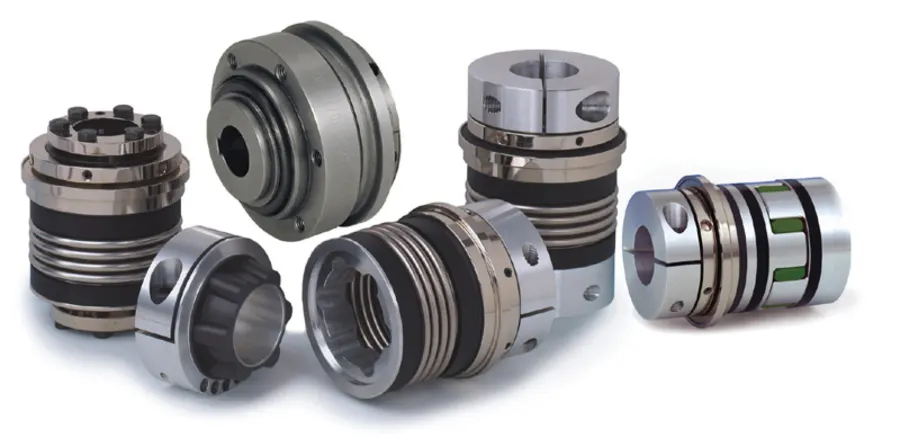
What is a tensioner roller, and what role does it play in mechanical systems?
A tensioner roller, also known as a belt tensioner or idler pulley, is a component commonly used in mechanical systems to maintain proper tension in belts or chains. It plays a crucial role in ensuring the efficient and reliable operation of various systems that rely on the power transmission provided by belts or chains. Here’s a detailed explanation of what a tensioner roller is and the role it plays in mechanical systems:
1. Definition and Construction:
A tensioner roller is a pulley-like component that is typically mounted on a spring-loaded arm or bracket. It consists of a smooth or grooved surface that comes into contact with the belt or chain. The tensioner roller is designed to rotate freely on bearings or bushings, allowing it to accommodate the movement of the belt or chain and maintain the desired tension.
2. Tension Maintenance:
The primary role of a tensioner roller is to maintain the appropriate tension in belts or chains. Tension is crucial for the proper functioning of power transmission systems. If the tension is too loose, the belt or chain may slip, resulting in a loss of power transfer and potential damage to the system. On the other hand, excessive tension can cause increased wear on the belt or chain, as well as strain on other components. The tensioner roller applies the necessary force to keep the belt or chain properly tensioned, ensuring optimal power transmission efficiency and preventing premature wear or failure.
3. Compensation for Belt or Chain Stretch:
Over time, belts and chains can experience stretching due to normal wear and tear or changes in operating conditions. This stretching can lead to a decrease in tension and affect the performance of the mechanical system. Tensioner rollers are designed to compensate for belt or chain stretch by automatically adjusting their position to maintain the desired tension. The spring-loaded arm or bracket allows the tensioner roller to move and adapt to the changing length of the belt or chain, ensuring consistent tension throughout the system’s operation.
4. Noise and Vibration Dampening:
Tensioner rollers also contribute to reducing noise and vibration in mechanical systems. The smooth rotation of the tensioner roller on its bearings or bushings helps absorb and dampen the vibrations generated during the operation of the belt or chain. This reduces the overall noise level and improves the smoothness of the system’s operation, enhancing user comfort and minimizing potential damage caused by excessive vibrations.
5. Maintenance and Replacement:
Proper maintenance of tensioner rollers is essential to ensure their continued functionality. Regular inspections should be conducted to check for signs of wear, damage, or misalignment. If a tensioner roller is found to be worn, damaged, or no longer providing adequate tension, it should be promptly replaced to prevent further complications and maintain the optimal operation of the mechanical system.
6. Applications:
Tensioner rollers are used in a wide range of mechanical systems that rely on belts or chains for power transmission. They can be found in automotive engines, industrial machinery, HVAC systems, printing equipment, and many other applications. The specific design and size of tensioner rollers may vary depending on the requirements of the system in which they are used.
In summary, a tensioner roller is a crucial component in mechanical systems that rely on belts or chains for power transmission. It ensures the proper tension of the belt or chain, compensates for stretch, reduces noise and vibration, and contributes to the overall efficiency and reliability of the system. Regular maintenance and timely replacement of tensioner rollers are essential to ensure optimal performance and prevent potential issues in mechanical systems.


editor by CX 2024-03-29
China manufacturer OEM Bearing SL014860 Full Complement Cylindrical Roller Bearing near me manufacturer
Product Description
OEM Bearing SL014860 Full Complement Cylindrical Roller Bearing
|
Product Name |
OEM Bearing SL014860 Full Complement Cylindrical Roller Bearing |
|
Brand |
TFN / OEM |
|
Model Number |
SL014860 |
|
Ring Material |
Steel |
|
Cage Material |
Brass,Nylon,Steel |
|
Precision |
P0, P6, P5, or as requested |
|
Vibration |
ZV1, ZV2, ZV3, or as requested |
|
Clearance |
C0,C2,C3, or as requested |
|
Type |
SL series ,N series,NU series,NJ series,Nup series,NF series |
|
Features |
High load carrying capacity ,High stiffness,Accommodate axial displacement ,Low friction ,Long service life,Enhanced operational reliability ,Separable and interchangeable . |
|
Quality standard |
ISO9001:2000/ SGS |
|
Quality Control Process |
1.Assembly |
|
2.Windage test |
|
|
3.Cleaning |
|
|
4.Rotary test |
|
|
5.Greasing and gland |
|
|
6.Noise inspection |
|
|
7.Appearance inspection |
|
|
8.Rust prevention |
|
|
9.Product packaging |
|
|
Application |
cylindrical roller bearing is usually only subject to radial force. Compared with ball bearing of the same size, its radial bearing capacity is increased by 1.5-3 times. It is rigid and shock resistant. It is mainly used for large motor, machine tool spindle, engine front and rear support shaft, train bus axle, diesel engine crankshaft, automobile tractor gearbox, etc. |
Other cylindrical roller bearing models :
| Designation | Principal dimensions | Basic load ratings | Fatigue load limit | Speed ratings | ||||
| dynamic | static | Reference speed | Limiting speed | |||||
| d | D | B | C | C0 | Pu | |||
| mm | kN | kN | r/min | |||||
| NU 202 ECP | 15 | 35 | 11 | 12.5 | 10.2 | 1.22 | 22000 | 26000 |
| NU 202 ECPHA | 15 | 35 | 11 | 12.5 | 10.2 | 1.22 | 22000 | 34000 |
| NJ 202 ECP | 15 | 35 | 11 | 12.5 | 10.2 | 1.22 | 22000 | 26000 |
| NU 203 ECML | 17 | 40 | 12 | 20 | 14.3 | 1.73 | 20000 | 34000 |
| NJ 203 ECP | 17 | 40 | 12 | 20 | 14.3 | 1.73 | 20000 | 22000 |
| N 303 ECP | 17 | 47 | 14 | 28.5 | 20.4 | 2.55 | 17000 | 20000 |
| NJ 203 ECPHA | 17 | 40 | 12 | 20 | 14.3 | 1.73 | 20000 | 30000 |
| NU 303 ECP | 17 | 47 | 14 | 28.5 | 20.4 | 2.55 | 17000 | 20000 |
| NUP 2203 ECP | 17 | 40 | 16 | 27.5 | 21.6 | 2.65 | 20000 | 22000 |
| NU 203 ECP | 17 | 40 | 12 | 20 | 14.3 | 1.73 | 20000 | 22000 |
| NJ 2203 ECP | 17 | 40 | 16 | 27.5 | 21.6 | 2.65 | 20000 | 22000 |
| NUP 203 ECP | 17 | 40 | 12 | 20 | 14.3 | 1.73 | 20000 | 22000 |
| NJ 203 ECML | 17 | 40 | 12 | 20 | 14.3 | 1.73 | 20000 | 34000 |
| N 203 ECP | 17 | 40 | 12 | 20 | 14.3 | 1.73 | 20000 | 22000 |
| NU 2203 ECP | 17 | 40 | 16 | 27.5 | 21.6 | 2.65 | 20000 | 22000 |
| N 203 ECPH | 17 | 40 | 12 | 20 | 14.3 | 1.73 | 20000 | 22000 |
| NJ 303 ECP | 17 | 47 | 14 | 28.5 | 20.4 | 2.55 | 17000 | 20000 |
| NU 203 ECPHA | 17 | 40 | 12 | 20 | 14.3 | 1.73 | 20000 | 30000 |
| NU 2304 ECP | 20 | 52 | 21 | 47.5 | 38 | 4.8 | 15000 | 18000 |
| N 304 ECP | 20 | 52 | 15 | 35.5 | 26 | 3.25 | 15000 | 18000 |
| NU 2204 ECP | 20 | 47 | 18 | 34.5 | 27.5 | 3.45 | 17000 | 19000 |
| NUP 304 ECP | 20 | 52 | 15 | 35.5 | 26 | 3.25 | 15000 | 18000 |
| NUP 204 ECPHA | 20 | 47 | 14 | 28.5 | 22 | 2.75 | 17000 | 24000 |
| NJ 2304 ECP | 20 | 52 | 21 | 47.5 | 38 | 4.8 | 15000 | 18000 |
| NU 204 ECML | 20 | 47 | 14 | 28.5 | 22 | 2.75 | 17000 | 30000 |
| NUP 2304 ECP | 20 | 52 | 21 | 47.5 | 38 | 4.8 | 15000 | 18000 |
| NU 204 ECP | 20 | 47 | 14 | 28.5 | 22 | 2.75 | 17000 | 19000 |
| NJ 204 ECPHA | 20 | 47 | 14 | 28.5 | 22 | 2.75 | 17000 | 24000 |
| NU 304 ECP | 20 | 52 | 15 | 35.5 | 26 | 3.25 | 15000 | 18000 |
| NJ 2204 ECP | 20 | 47 | 18 | 34.5 | 27.5 | 3.45 | 17000 | 19000 |
| NUP 204 ECP | 20 | 47 | 14 | 28.5 | 22 | 2.75 | 17000 | 19000 |
| NUP 204 ECML | 20 | 47 | 14 | 28.5 | 22 | 2.75 | 17000 | 30000 |
| N 204 ECP | 20 | 47 | 14 | 28.5 | 22 | 2.75 | 17000 | 19000 |
| NJ 204 ECP | 20 | 47 | 14 | 28.5 | 22 | 2.75 | 17000 | 19000 |
| NJ 304 ECP | 20 | 52 | 15 | 35.5 | 26 | 3.25 | 15000 | 18000 |
| NJ 204 ECML | 20 | 47 | 14 | 28.5 | 22 | 2.75 | 17000 | 30000 |
Certificate
Packing
FAQ
Q:Why choose SEMRI?
A:1. We are professional,have factory in ZheJiang for many years.
2. We are experienced for 10 years.
3. We can offer a various kind of bearing with high quality:Z1V1,Z2V2,Z3V3 and best price
Q:How is the quality of your products?
A:The same quality, we have lower price.The same price,we have better quality.
Q:Except Full complement Cylindrical roller bearing,what other main bearing do you have?
A:Taper Roller Bearing,Thrust roller bearing,Spherical roller bearing,Deep groove ball bearing,Angular contact ball bearing etc.
Q:Can I get Full complement Cylindrical roller bearing free samples?
A:We will charge a little sample fee for our regular designs or customized ones, These charges will be refunded to you when your mass production order is confirmed.
Q:Can you make the products as our requirement?
A:We have more than 10 year’s OEM experience. We supply products fo more than 300 automobile parts factories.
Replacing a Failing Drive Belt Tensioner
A failing drive belt tensioner can be extremely costly. Here’s what to look for and what to do if you suspect yours is bad. In addition, you’ll learn how to identify Idler pulleys and repair it yourself. If the tensioner is failing, you should replace the belt, as well as the Idler pulleys and shaft bearings. But what if the tensioner isn’t faulty?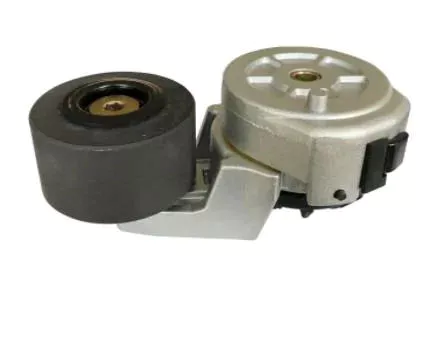
Symptoms of a bad or failing drive belt tensioner
If your car’s drive belt is not moving smoothly, the pulley may be at fault. Ideally, the tensioner pulley should move away from the engine when the car starts. However, if it stays put or starts to move toward the engine, it’s time to replace the tensioner. The belt may also start to exhibit different wear patterns, such as the uneven wear of the sprockets, bearings, and springs.
If the serpentine belt begins to look loose and the engine loses its luster, the problem is most likely the bad drive belt tensioner. This issue will result in engine vibration. A faulty drive belt tensioner may also lead to a faulty spark plug, which prevents fuel from burning in the combustion chamber. This issue will likely require an engine diagnostic tool, such as an OBD2 scanner, to determine the cause of the check engine light.
Another sign that your drive belt tensioner is failing is a chirping noise. This noise can occur intermittently or constantly, and it may signal a problem with the pulley. In some cases, a faulty pulley may even cause your engine to misfire. Additionally, you may notice that the engine won’t start, even if you engage the starter motor.
In addition to the noise that may come from a failing tensioner, the bad belt tensioner may cause your serpentine to fail. In addition to the noise, this can also lead to overheating of the engine, which can result in costly damages. In addition to causing engine damage, a bad belt tensioner won’t reserve the minimum tension it needs to do its job and may even exceed it, causing the belt to wear out much faster.
If you notice any of these symptoms, it may be time to replace the drive belt tensioner. You can find a replacement OEM part online at a discounted price, as they’re available in wholesale quantities. A Mazda engine typically has no other parts blocking the serpentine belt path, so you can easily find the part you need. After replacing the drive belt tensioner, you’ll need to replace the serpentine belt as well.
Cost to replace a drive belt tensioner
Depending on the location and type of vehicle, replacing a drive belt tensioner can cost between $235 and $267. Some repairs may require other parts, such as a serpentine belt or tensioner housing. RepairPal’s Fair Price Estimator can help you get an accurate estimate for your particular vehicle. You can also contact HomeX, a virtual repair shop that can fix simple issues like loose drive belt tension.
It’s a relatively simple DIY job for most cars. An experienced mechanic will be able to replace the belt in a half hour or less, depending on the type of car and how many parts are affected. Depending on the complexity of the repair, the labor to replace the drive belt tensioner could cost anywhere from $50 to $170. The labor to replace the drive belt tensioner is typically included in the quoted price, but some auto shops may charge more to replace other car parts as well.
Replacing the drive belt tensioner is a relatively easy task. While the process might take an hour or more, it will be worthwhile in the long run. Regular inspections can prevent costly repairs by identifying problems before they cause major damage. A car’s belt is essential to the operation of the engine and can’t be operated without it. Changing it can save you money, as it will save you from spending extra on unnecessary parts.
Thankfully, there are plenty of tools available to help you replace your drive belt. While it may not be the easiest repair, it will still cost less than a mechanic’s service call. It is better to replace the belt early than to wait for the vehicle to break down, as this will prevent more expensive parts from breaking. You may also consider investing in a premium belt, which will give you twice as much mileage as a cheaper one.
While a drive belt tensioner is generally considered a wear-and-tear item, it is a part that should last the entire life of the vehicle. You can expect to replace the drive belt tensioner no earlier than 125,000 miles, but it is better to do it early if your car isn’t that old. And it doesn’t hurt to check the owner’s manual for directions on how to replace the drive belt tensioner.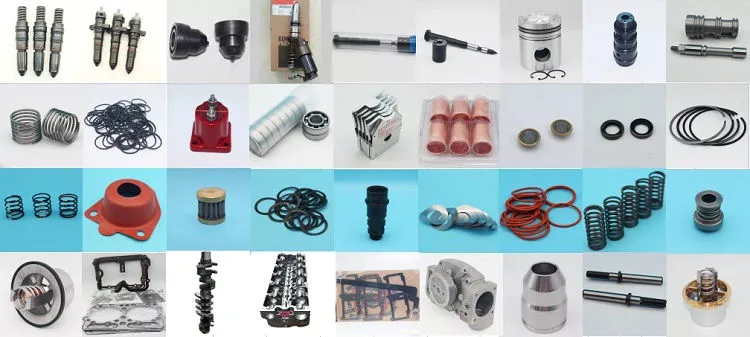
Idler pulleys
Idler pulleys may seem like a minor part of your car, but their important job is to keep various components in good working order. Fortunately, they are inexpensive and don’t need much maintenance. If 1 pulley fails, it is best to replace all of them. However, it is not always easy to check idler pulleys yourself. It’s recommended that you visit a professional auto repair shop that is ASE-certified to inspect and replace the idler pulley.
Depending on the size and type of idler pulleys you need, you’ll have to purchase 2 or 3 pieces. You’ll need to purchase a pair of pliers for this part, as well as a tensioner pulley wrench. The cost of a replacement idler pulley will vary by make and model, but you can expect to pay between $40 and $200. These prices don’t include taxes or fees. Because they are so essential to drive belts, it’s worth investing in 1 or two.
Idler pulleys are a vital part of a car’s engine. They’re found underneath the hood and are usually 2 to 4 inches in diameter. They run over a roller that’s used to tension the belt. The belt is wrapped around a series of engine parts, and the idler pulleys are a complement to each other. You may not need an idler pulley on your car, but your mechanic will install it for you if you don’t.
The idler pulleys for a belt tensioner are crucial parts of your car’s engine. If they are worn down, the belt is likely to move loosely over them. Corrosion may also make the idler pulley move less freely. If the idler pulley is slipping, the belt may jump over the pulley, and the squealing noises will indicate a serious problem.
The idler pulley is a pivotal part of the engine’s power train. It redirects the path of the serpentine and timing belts, so that they can make optimal contact. The larger the contact patch, the more power the belt will transfer. The idler pulley can also improve the vehicle’s performance. It is a vital part of the engine, so make sure you check it frequently and install it correctly.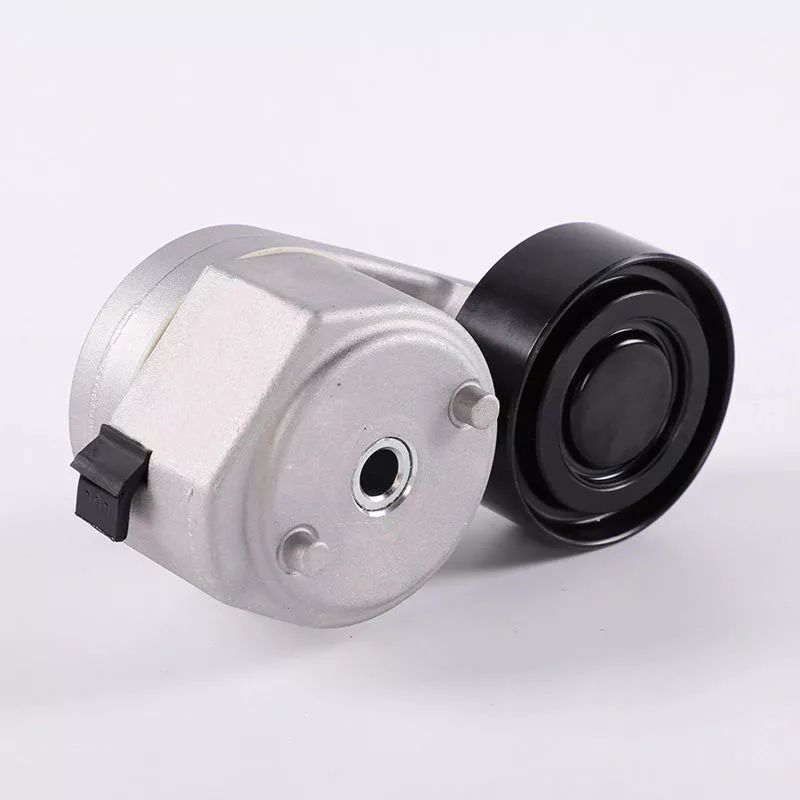
Repairing a drive belt tensioner
Replacing a drive belt tensioner is relatively simple. While your belt may need to be replaced, other parts of your engine may also need to be fixed. Typically, the tensioner will be replaced along with the pulley, as both parts are prone to malfunction. Replacing the drive belt tensioner is a fairly straightforward job, and it should only take about an hour or two. By following these simple steps, you can save yourself a lot of money and time.
You can detect the problem by observing the belt glazing. Typically, it occurs when the tensioner does not have enough spring tension. Another sign of a failed component bearing is excessive arm oscillation. Excessive chattering and oscillation indicate that the damper has worn out. If you notice excessive oscillation, you should replace the tensioner pulley. Otherwise, you might be dealing with a defective bearing.
A damaged or out-of-adjusted drive belt will make a squealing noise. This is due to the belt slipping on the pulleys. It is most noticeable when the car is first started in the morning. A damaged drive belt will also be hard to manipulate. The new belt should be the same length and width as the old one. You can check the tensioner by pulling the belt and compressing it.
A worn-out drive belt tensioner will result in unusual noise, excessive wear, and a loose belt. This is especially affecting if the car is equipped with a serpentine belt. The drive belt tensioner has a roller bearing that can wear out, which will cause a squealing noise or even cause the belt to roll off entirely. Because of its important role in engine operation, it is vital to check the condition of the drive belt tensioner on a regular basis.
While replacing a drive belt tensioner may seem like a simple DIY project, you should consult a mechanic before undertaking the work. The parts and labor costs of a drive belt tensioner repair can range from $140 to $400, and you should allow an hour for this repair. If you are not comfortable performing the repair yourself, you can always hire a mechanic to do it for you. In most cases, a drive belt tensioner replacement will cost approximately $70 to $80 and take about an hour.

